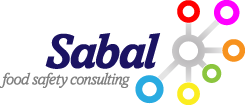
Sabal Food Safety Consulting / August 6th, 2014
There are many articles and opinions in the media about foodborne illness outbreaks, their sources and the value of inspections and audits. Some of them refer to audits and auditors, inspectors and inspections, and their role in the prevention of foodborne illnesses.
Inspections and audits, what is the difference? In general, when “inspecting”, any finding that does not conform to the reference used must be fixed and evidence must be maintained. When “auditing”, any finding that does not conform to the reference used must be fixed, as in an inspection. But then, an investigation must be performed to find the root cause of the problem and, a “preventive action” must be developed, implemented and verified to prevent the cause of the problem to happen again. Evidence must be maintained to prove the fix and the preventive action of the finding were taken and verified. Based on this, to improve the robustness of a food safety program, it is more useful to have audits than inspections.
An audit is a systematic evaluation – comparison – of the requirements of a food safety standard or regulation against a documented program, a food, feed or beverage manufacturer/processor has developed for their own products, to determine the effectiveness of the program. The auditor’s role is to assess the conformance of the facility’s documented food safety program against the reference used (Standard), verify the effectiveness of the implementation and, check for records showing evidence of performance of the procedures according to the documented and validated program.
Fundamentally, there are three types of audits. First, there are internal audits. Internal audits must be performed by qualified individuals within a company or by a consultant. The purpose is the same as any other type of audit, find possible non-conformities against the reference used.
Then, there are second-party audits. These audits are performed on suppliers as part of their customers’ request. Something particular about these audits is that the reference used could be developed by the customers requiring the audit, by a consultant or, from other sources, like those developed by certification bodies. Depending on the specific needs of the customers, the reference might be restricted to only certain topics of the full spectrum of what is included in an internationally benchmarked (GFSI) food safety audit. The auditors performing this type of audits may receive training on the “intent” of the reference, like those owned by certification bodies, but may not be required in the other cases.
Third-party audits are the third type. These audits are performed using a reference (Standard) that is benchmarked against the Global Food Safety Initiative (GFSI) Guidance Document, covering the topics necessary to comply with the minimum requirements of a food safety standard. The auditors must receive training on the “intent” of the reference (Standard) as well as training on how to perform the audits.
There are a few food safety audits performed for a specific or reduced scope and those will not be considered in this article.
Based on the explanation above, two basic topics will have a significant impact on the final score or grading of any type of audit. First, the reference used, and second, the auditor’s knowledge, expertise (Skills) and qualifications.
The reference used plays a significant role on the scope of the audit and its score or grading. When performing any of the audit types described above, the auditor will utilize the same reference as the one used to develop the food safety program of the company being audited to perform the audit.
The second topic is the knowledge, experience (Skill) and ethics of the auditor. It is possible that an average person, with food safety background, takes auditor training and will understand what is required to perform an audit. Now, does this mean that this person is an auditor? Most probable, the answer is no, as the expertise plays a big role in the performance of an audit; the more you practice the more you understand how to implement the knowledge acquired.
Ethics comes with the auditor, the human being. This is where food safety meets with money. However, when performing a food safety audit, money must not be “within the scope of certification”.
The relevance of an audit will always depend on how complete is the reference used and, on the ability of the auditor to identify “food safety” non-conformities.




